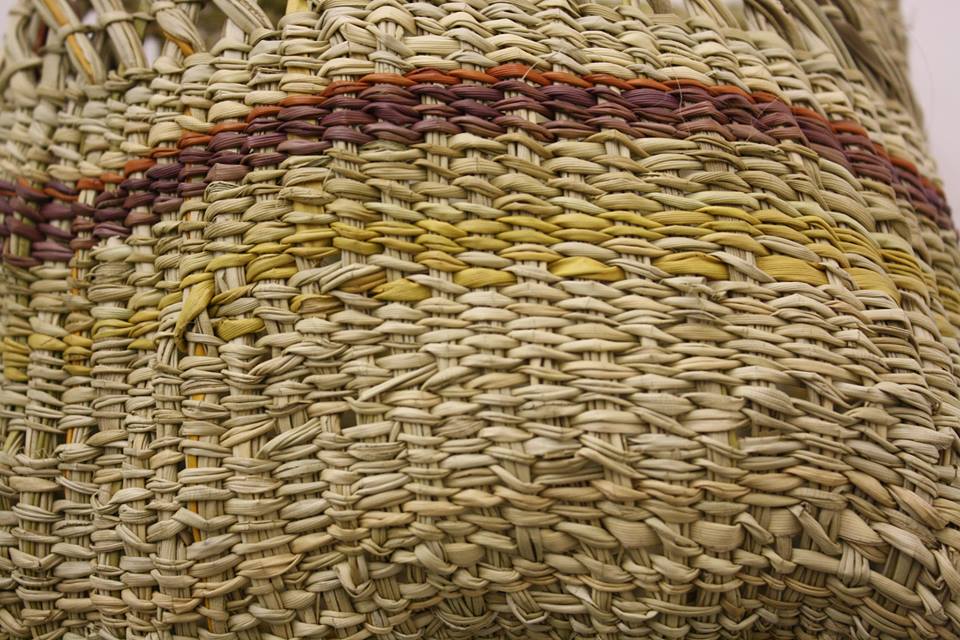Melbourne artist Josephine Mead recently travelled north to experience traditional basket weaving and returned with much more than her woven wonder.
Josephine completed a workshop with around 15 other people in Mäpuru, a remote community in east Arnhem Land, where indigenous elders teach visitors the traditional weaving techniques of Yolngu people.
The artist has always been interested in indigenous culture, especially art and craft and wanted to do the 10-day trip since reading about it two years ago.
“My mum, when she was probably a little bit older than me, lived in the Balgo in the Kimberley in an Aboriginal community as a nurse for a few years so I grew up hearing stories about that,” she says.
“It made me always want to learn more about indigenous culture.”
View Mäpuru in a larger map
Josephine found herself being adopted into the loving and generous community of Mäpuru.
“In Yolngu culture everything is divided into two moieties, two groups, you are either Yirritja or Dhuwa — that’s for people but also trees and places, and then under those two groups there are skin names,” she explains.
When someone is adopted they receive a skin name, a mälk, which in turn gives them a place in the community.
“For Yolngu people, relationships are really important to them, and family. They see everything as being connected as having a place for you, you sort of need that place to see how you are connected to everything else,” Josephine says.
“I was given a skin name which is Bilinydjan, which is a Dhuwa skin name, which was really amazing because suddenly I had all of this family. They would say this is Roslyn she is your märi, your grandmother, this is someone else she is your yapa, your sister, so that was really beautiful.”
Weaving tradition
During the workshop, some people were weaving baskets while others chose to work on dilly bags. Josephine wove a basket and enjoyed the less outcome-focussed way of learning the Yolngu people encourage.
“The women have a big bark shelter that they sit and weave under. You just get there on the first day and go sit next to a woman,” she says.
“You sit and you just watch what the women are doing and when they think you are ready they’ll start a basket for you, then they will pass it over to you. If you are doing it wrong they will take it back and then pass it again.
“It’s more about watching and experiencing as opposed to asking lots of questions.”
The baskets are woven from pandanus, a palm-like tree the weavers gather and prepare themselves.
“We chop down the trees and strip the long leaves or reeds.With your nails you take off the spikey parts of the leaves and then take off the top layer and strip them down into small strips, which was really hard and the women make it look really easy,” Josephine says.
They then would dry them in the sun and dye them using yellow colour obtained from the roots of the djundum tree creating one of the most essential dyes in Arnhem Land.
“You go and you cut down these big trees and then take the roots, the yellow roots, you carve down the roots and boil them up and that’s how you make the yellow colour,” Josephine says.
As an artist, Josephine says she learnt a really nice lesson in appreciating where artistic materials are born, but she is unlikely to translate the skills into her art back home.
“I think it was good to have more of an understanding of where things come from, I feel like I’ve come back and I am a bit less material focussed than I was before I went away,” she says.
“It wouldn’t necessarily be appropriate for me to use the weaving techniques without making work about indigenous culture or having some sort of stronger reason, but the experience of sitting and sharing and working together and just being open has definitely influenced me.”
Yolngu way of life
Josephine says it is always challenging being in a new place, but for her this became a very emotional experience.
“Roslyn, who was one of the leader female elders in the community, she was incredible and she had written manikay, crying songs, that she sang to us with the kids that spoke of all the people she had lost in her life,” she says.
“They were so beautiful, I cried so many times while I was up there.”
On Josephine’s final night in Mäpuru the Yolngu people threw a big Bungul.
“It’s a big ceremony, we learnt all the dances and painted ourselves in white ochre, did the dances and they played didgeridoo and clapsticks,” she says.
“It was the most amazing thing ever, it was beautiful just dancing in the dust.”

